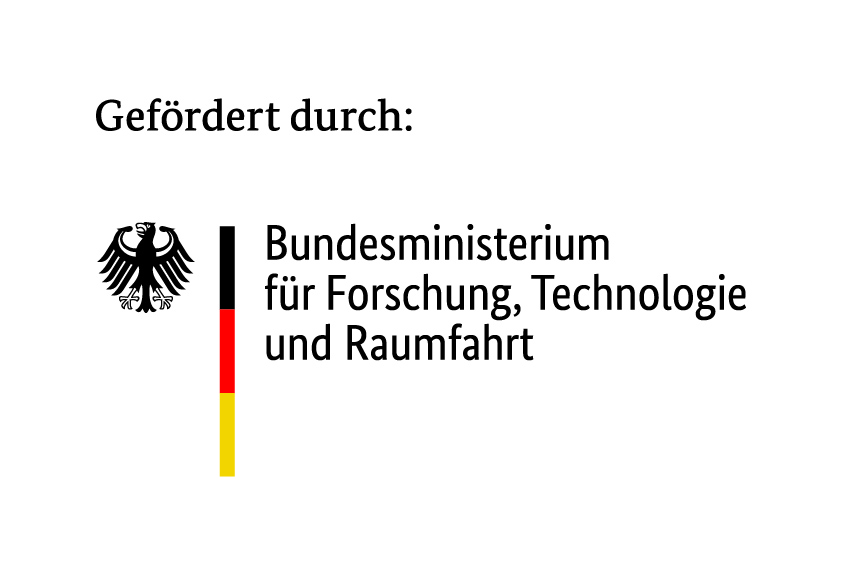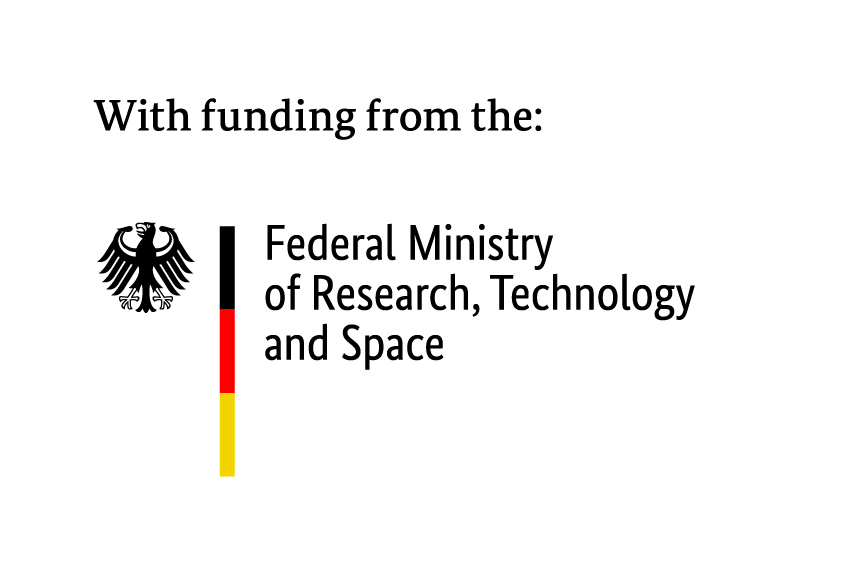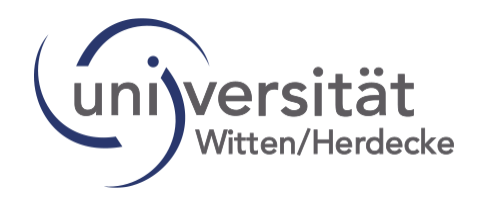Klimawandel und Global Finance am Scheideweg: Politische Herausforderungen, politisch-ökonomische Dynamiken und nachhaltige Transformation
SuFi
Teilprojekt 1: Private Finanzakteure, staatliche Klimapolitik und nachhaltige Finanzierung

Prof. Dr. Joscha Wullweber
Teilprojekt 2: Zivilgesellschaft und Climate Finance

Publikationen von SuFi
SuFi I Greener and cheaper: Green monetary policy in the era of inflation and high interest rates
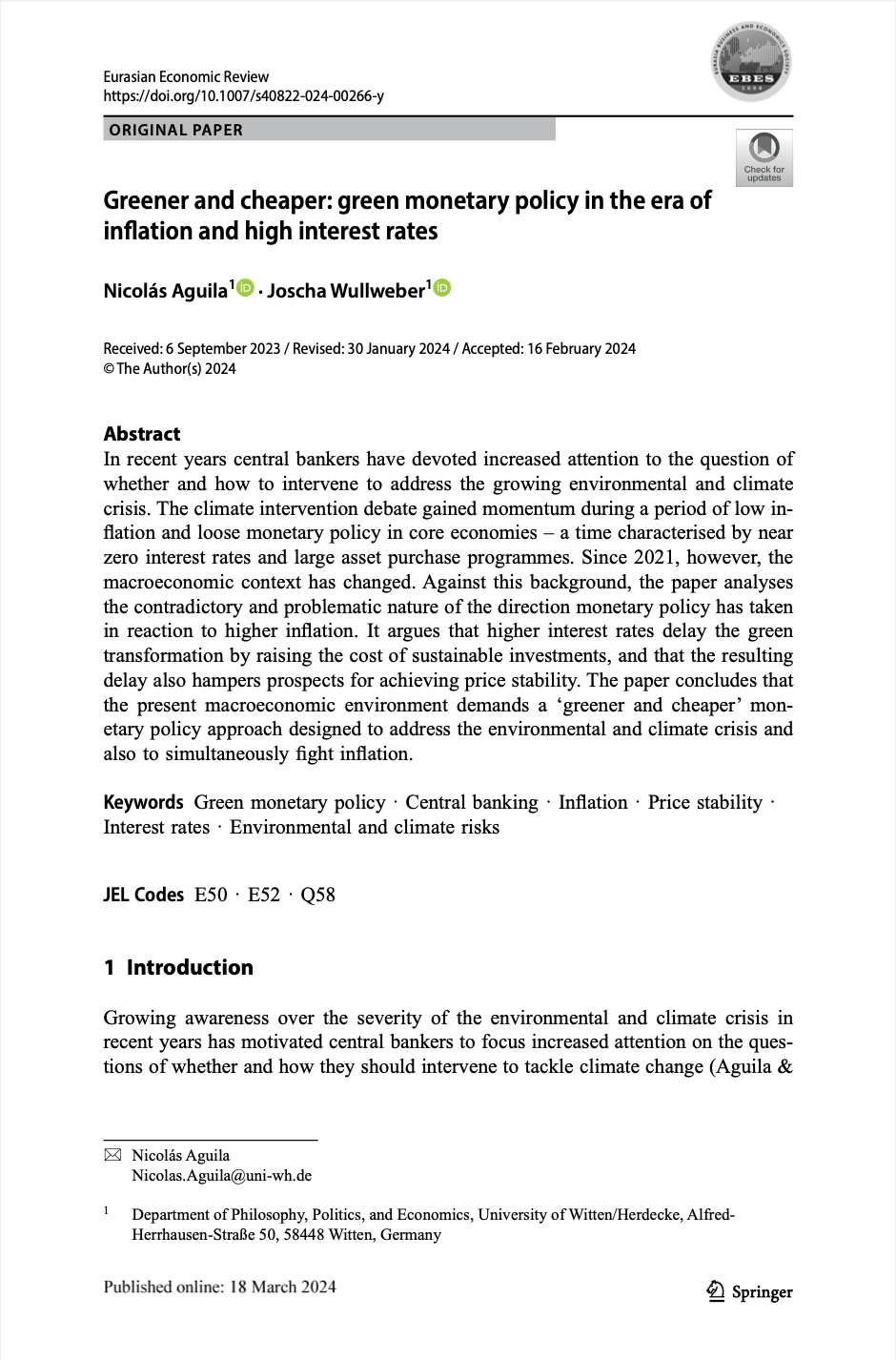
Greener and cheaper: Green monetary policy in the era of inflation and high interest rates
In recent years central bankers have devoted increased attention to the question of whether and how to intervene to address the growing environmental and climate crisis. The climate intervention debate gained momentum during a period of low inflation and loose monetary policy in core economies – a time characterised by near zero interest rates and large asset purchase programmes. Since 2021, however, the macroeconomic context has changed. Against this background, the paper analyses the contradictory and problematic nature of the direction monetary policy has taken in reaction to higher inflation. It argues that higher interest rates delay the green transformation by raising the cost of sustainable investments, and that the resulting delay also hampers prospects for achieving price stability. The paper concludes that the present macroeconomic environment demands a ‘greener and cheaper’ monetary policy approach designed to address the environmental and climate crisis and also to simultaneously fight inflation.
- Veröffentlichungsdatum: 18.03.2024
- Autor:innen: Nicolás Aguila & Joscha Wullweber
- Publikationsart: Paper
- Keywords: Green monetary policy, Central banking, Inflation, Price stability, Interest rates, Environmental and climate risks
- Link zum PDF-Dokument
SuFi I Legitimising green monetary policies: Market liberalism, layered central banking, and the ECB’s ongoing discursive shift from environmental risks to price stability
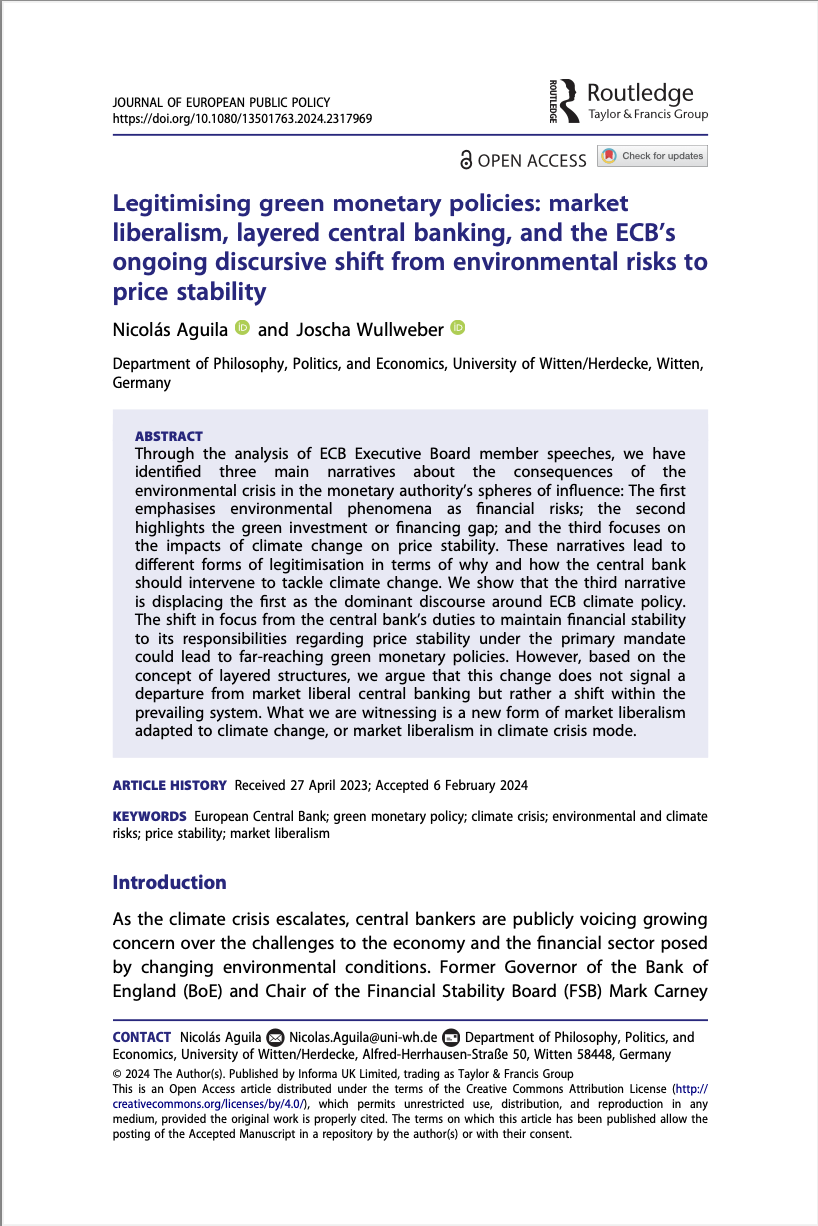
Legitimising green monetary policies: Market liberalism, layered central banking, and the ECB’s ongoing discursive shift from environmental risks to price stability
Through the analysis of ECB Executive Board member speeches, we have identified three main narratives about the consequences of the environmental crisis in the monetary authority’s spheres of influence: The first emphasises environmental phenomena as financial risks; the second highlights the green investment or financing gap; and the third focuses on the impacts of climate change on price stability. These narratives lead to different forms of legitimisation in terms of why and how the central bank should intervene to tackle climate change. We show that the third narrative is displacing the first as the dominant discourse around ECB climate policy. The shift in focus from the central bank’s duties to maintain financial stability to its responsibilities regarding price stability under the primary mandate could lead to far-reaching green monetary policies. However, based on the concept of layered structures, we argue that this change does not signal a departure from market liberal central banking but rather a shift within the prevailing system. What we are witnessing is a new form of market liberalism adapted to climate change, or market liberalism in climate crisis mode.
- Veröffentlichungsdatum: 17.02.2024
- Autor:innen: Nicolás Aguila & Joscha Wullweber
- Publikationsart: Article
- Keywords: European Central Bank; green monetary policy,
- Link zum PDF-Dokument
SuFi I The ecor as global special purpose money: towards a green international monetary system to finance sustainable and just transformation
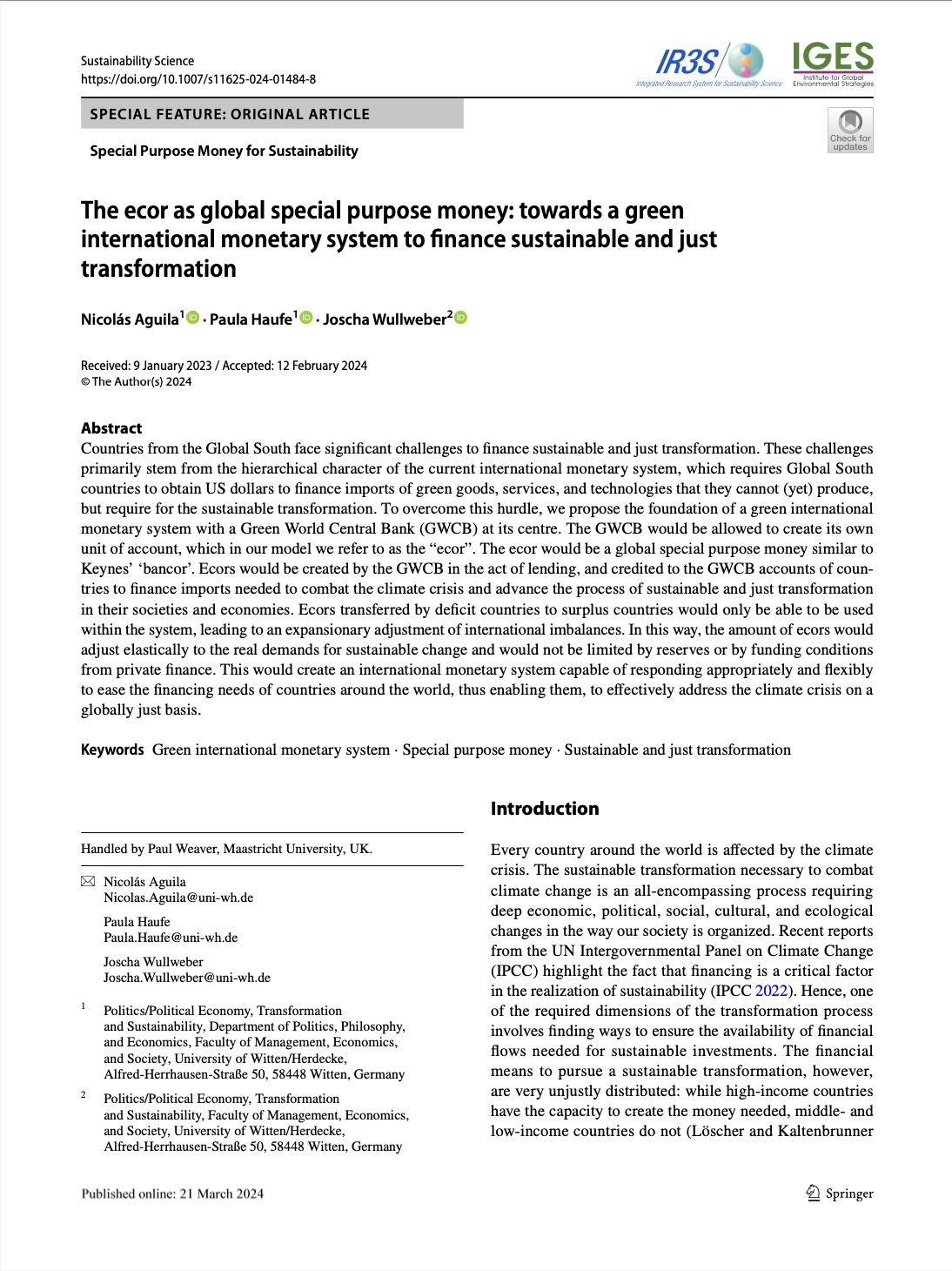
The ecor as global special purpose money: towards a green international monetary system to finance sustainable and just transformation
Countries from the Global South face signifcant challenges to fnance sustainable and just transformation. These challenges primarily stem from the hierarchical character of the current international monetary system, which requires Global South countries to obtain US dollars to fnance imports of green goods, services, and technologies that they cannot (yet) produce, but require for the sustainable transformation. To overcome this hurdle, we propose the foundation of a green international monetary system with a Green World Central Bank (GWCB) at its centre. The GWCB would be allowed to create its own unit of account, which in our model we refer to as the “ecor”. The ecor would be a global special purpose money similar to Keynes’ ‘bancor’. Ecors would be created by the GWCB in the act of lending, and credited to the GWCB accounts of countries to fnance imports needed to combat the climate crisis and advance the process of sustainable and just transformation in their societies and economies. Ecors transferred by defcit countries to surplus countries would only be able to be used within the system, leading to an expansionary adjustment of international imbalances. In this way, the amount of ecors would adjust elastically to the real demands for sustainable change and would not be limited by reserves or by funding conditions from private fnance. This would create an international monetary system capable of responding appropriately and fexibly to ease the fnancing needs of countries around the world, thus enabling them, to efectively address the climate crisis on a globally just basis.
- Veröffentlichungsdatum: 21.03.2024
- Autor:innen: Nicolás Aguila, Paula Haufe & Joscha Wullweber
- Publikationsart: Article
- Keywords: Green international monetary system I Special purpose money I Sustainable and just transformation
- Link zum PDF-Dokument
SuFi I The green banking gap: how bankability, business models, and regulations challenge banks’ decarbonisation

The green banking gap: how bankability, business models, and regulations challenge banks’ decarbonisation
Banks have been slow to increase green lending while they continue to finance high-GHG-emitting activities, a phenomenon we call the "green banking gap". Based on interviews with 21 bank employees, supported by interviews with 67 practitioners working for non-bank financial institutions, the public sector, and civil society organisations in areas related to sustainable finance, we argue that explanations for the green banking gap can be grouped into three broad categories: bankability, business model, and regulation. First, there are not many green firms and projects that meet banks' desired risk/return profile, while high-GHG-emitting activities remain bankable. Second, there are constraints to decarbonise banks' portfolios arising from the significant change in their business model in recent decades, making (green) corporate, and particularly project, lending relatively less important. Even when they lend, the characteristics of the lending process imply a bias towards high-GHG-emitting over green activities as balance sheets are locked in old loans and banks prioritise long-term relationships with their clients. Finally, there are constraints on green lending and incentives to high-GHG-emitting lending arising from financial (liquidity and capital requirements) and sustainability regulations and overall policy uncertainty over the future decarbonisation path of the economy.
- Veröffentlichungsdatum: 07.05.2025
- Autor:innen: Nicolás Aguila, Paula Haufe, Riccardo Baioni, Jan Fichtner, Janina Urban, Simon Schairer und Joscha Wullweber
- Publikationsart: Working Paper
- Keywords: banks, green financing gap, climate-related and environmental risks, bankability, sustainable finance
- Link zum PDF-Dokument
